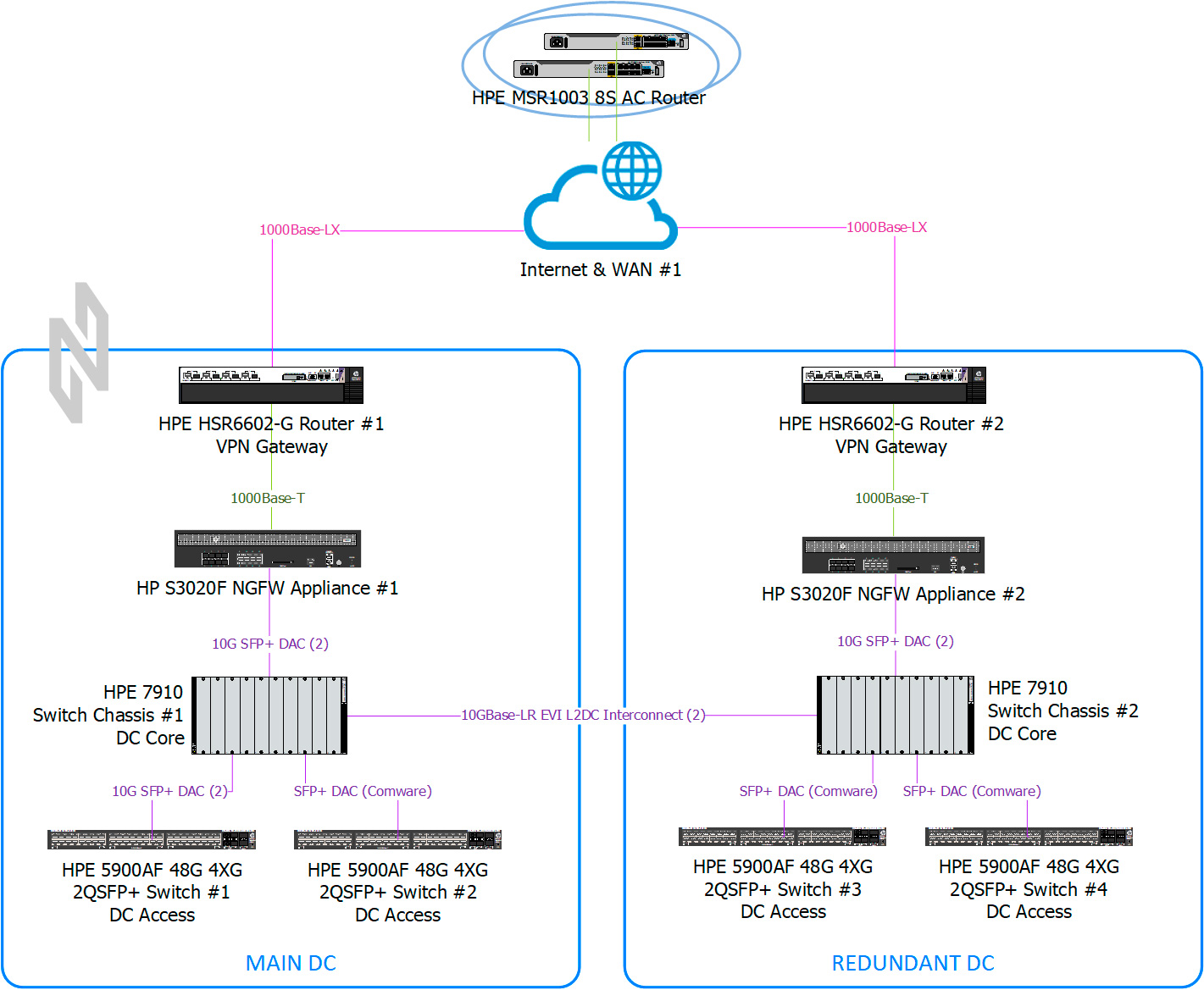
The goal of the project is to organize a fault-tolerant network infrastructure.
A public sector client in the Asian region is modernizing its corporate IT infrastructure. The new architecture should be geographically distributed in two different data centers, each of which will perform its function – the main one, regularly serving users, and the backup one, which provides fault tolerance. One of the key requirements for the architecture was the ability to provide L2 connectivity between data centers. In addition, the corporate network of the customer includes more than 100 geographically distributed offices, with each of which communication must be continuously maintained. The key is the reliable and uninterrupted operation of the company's server infrastructure. Designed and proposed solutions based on Hewlett-Packard Enterprise (HPE) equipment. HPE works successfully in the international IT market and specializes in the design and production of telecommunications equipment, servers and enterprise-class data storage systems.
Fields of application or industries for which this solution is suitable
- A large enterprise-level company
- Any other company that needs a fault-tolerant and reliable network perimeter
Tasks for the executor of the project
The choice of solution architecture is based on the following requirements of the customer:
- High performance of the corporate data transmission network
- High level of information security
- Reliability and round-the-clock availability of network services
- Convenience and simplicity of administration and operation
- The need for continuous connectivity between two geographically distributed data centers
Architecture
The core of the network in each data center is an HPE 7900 switch. At the access level, HPE 5900 switches are used for 1/10G server connections. At the perimeter of the network, HPE HSR 6602 routers are used. For security, two HPE TippingPoint S3020F gateways are used, managed by an HP vSMS server. To ensure connectivity between data centers, the EVI protocol is used based on HPE 7900 switches. ADVPN and the OSPF protocol are used for routing and security between data centers and remote sites, and HPE MSR 1008 routers are used at remote sites. A system was implemented to monitor and manage the network infrastructure HPE IMC.
The tasks that are solved, the benefits of the solution that the business receives
TechExpert's solution for building a corporate data center network infrastructure based on Hewlett-Packard Enterprise equipment provides the following tasks:
- Reliability and fault tolerance of the data center network infrastructure
- High performance of the network infrastructure
- Fault-tolerant connectivity between geographically distributed data centers and remote company offices
- Ability to use functionality that requires L2 connectivity between servers in geographically distributed data centers
- Flexibility and scalability of the network infrastructure, which allows you to adapt the network to current needs with minimal costs
More details about the service design, deployment and configuration of networks, as well as solutions with building a wireless network based on HPE equipment.
